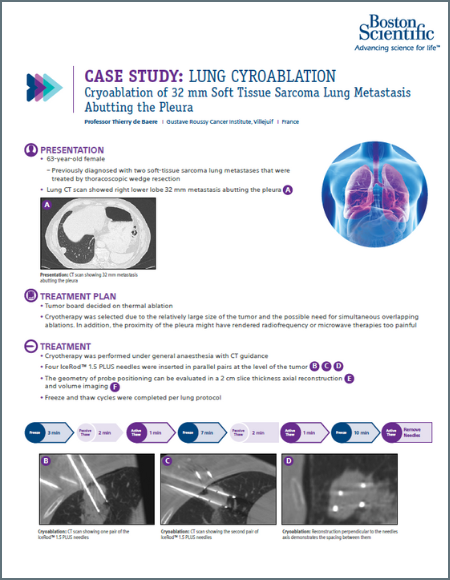Lung resources
ICE Cryoablation Technology
Key Resources
Overview
The ECLIPSE study
Efficacy of Cryoablation on Metastatic Lung Tumors with a 5-Year Follow-up
Study objective
- Primary objective was to assess 5-year local control of CA in lung tumors of 3.5 cm or less in patients with pulmonary metastatic disease
- Secondary objectives to evaluate cancer-specific and overall survival, as well as evaluate changes in quality of life (QoL) over a five-year period
Key results
Local Tumor Control Rates
Freedom from local progression
Patients free from local progression without additional locoregional treatment at the index lesion.
ECLIPSE study conclusion
Cryoablation is an effective means of local tumor control in patients with metastatic lung disease, with the majority of surviving patients maintaining local tumor control at the index tumor site over 5 years. Furthermore, cancer-specific survival and overall survival were greater after 5 years than for many other local treatment modalities, including surgical resection.
Case study
Cryoablation of mCRC in the Lung Located Adjacent to the Aorta
A 57-year-old woman with a history of lung metastases from colorectal cancer presented with a new 1 cm lung metastasis identified in the lower left lobe. Cryoablation was performed with one IceSphere™ 1.5 needle and CO2 was injected into the pleural space to move the metastasis away from the aorta to prevent possible damage to the aorta and prevent the heat-sink effect that would reduce chances of complete ablation. The unique “stick-mode” feature offered by cryoablation allows the tumor to be moved away from vulnerable adjacent organs, and consequently for technically challenging lung tumors to be treated safely and effectively.
Thierry de Baere, MD I Gustave Roussy Cancer Institute I Villejuif, France











